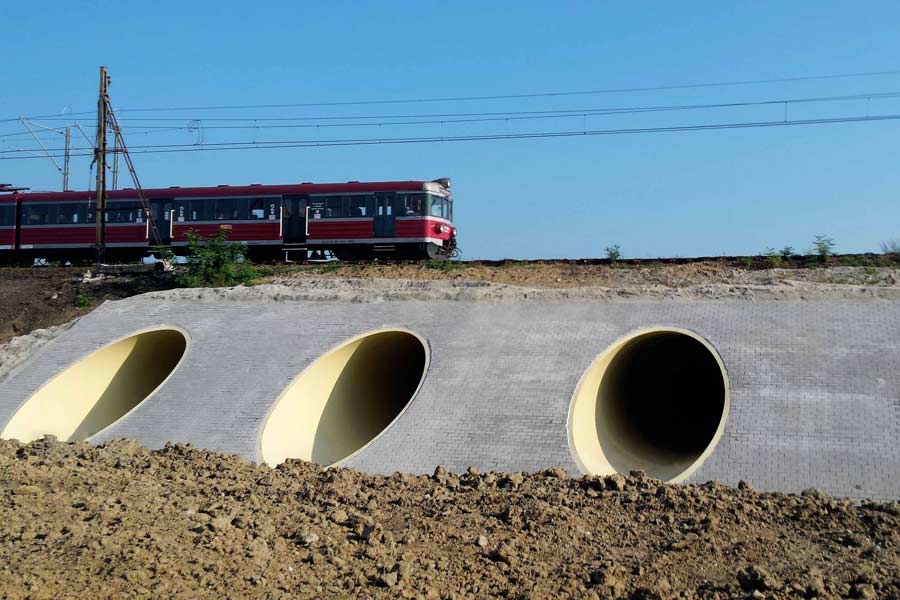
Hobas CC-GRP Culverts DN 3000 Jacked Under Railway
When a pipeline route crosses a railway embankment, jacking is usually the optimal installation method as it does not require disruptions in rail traffic. In the village of Cikowice in Southern Poland, four culverts with a diameter of 3000 mm and a length of 34 m each have been jacked under a railway line for the sake of flood control. Hobas Poland supplied the required GRP pipes for this challenging project.
In 2010, the Raba River overflowed its banks and flooded Cikowice and its neighbouring villages. Unfortunately, Cikowice is bordered by a railway embankment to the north, which acted as a dam, causing an additional accumulation of water. The water level on the village side was almost a meter higher than that on the opposite side, an area consisting largely of meadows. In order to prevent such incidents in the future and enable the outflow of excessive water, a flood prevention project was initiated in 2014. It was realized in the context of the modernisation of the railway line E30/C-E 30 and involved the construction of four large culverts beneath the railway embankment. If the water level rose again, the culverts should allow for the water to pass freely to the other side.
Hobas Poland supplied the required pipes with an external diameter of 3000 mm for the realization of the culverts. The pipes’ smooth inner surface ensures that flood water which flows through them and usually contains various impurities does not lead to siltation. Hobas Pipes also made it much easier to resume jacking works after an installation interruption due to heavy rain: The water causes the sandy soil to become slightly compacted and adhesive, and the thrust force required to restart works after the interruption is usually quite high. Thanks to the smooth outer surface, the necessary forces would be comparably lower and a restart quite easy. Before the start of the jacking works, the rail tracks were equipped with special beams that transferred the load from the trains evenly to the rails in case of any ground movements.
The structure of the pipes, on the other hand, was strong enough that even in the course of their installation the vibration induced by passing trains was not felt inside. The jacking machinery was secured against sliding on the sandy and slippery soil and positioned in a way to install the pipes with a slight slope, so that the water would eventually flow in the right direction. Once a culvert had been jacked through the embankment, its ends were specially prepared: One side was bevelled from the top, while on the uninhabited side of the embankment the culverts were equipped with special flaps, which prevent the backflow of water to the village. The construction of culverts in Cikowice took around two months. The project is in successful operation and the client satisfied with the Hobas Solution.
More information about this application
PROJECT DETAILS
| Project ID: [6297] | |
| Country: | Poland |
| City: | Cikowice |
| Year: | 2014 |
| Application: | Drainage |
| Installation: | Microtunneling |
| Technology: | Hobas |
| Total Length: | 136 m |
| Nominal Diameter DN: | 3000 mm |
| Nominal Pressure PN: | 1 bar |
| Nominal Stiffness SN: | 40000 | 64000 N/m2 |
